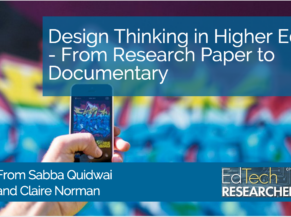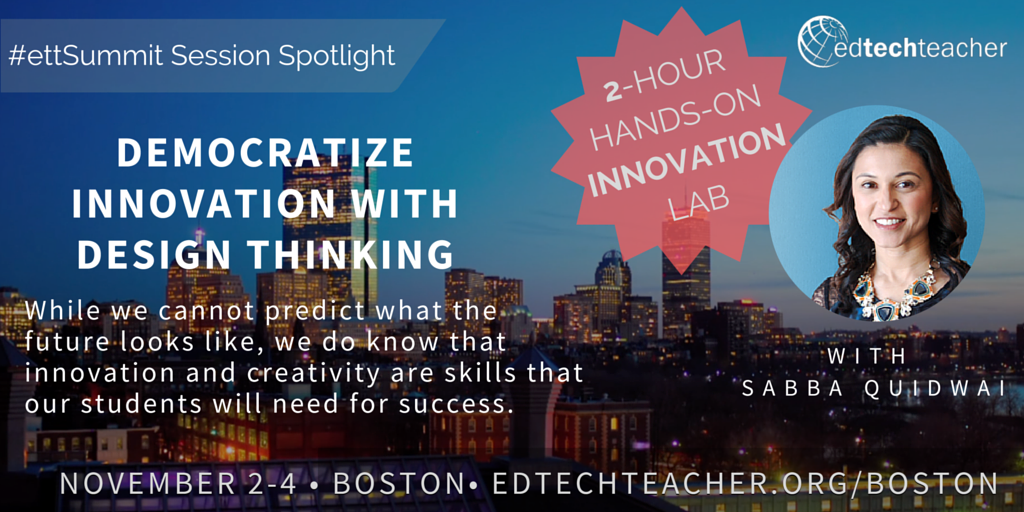This post first appeared on EdTech Researcher and was co-authored by Sabba (@AskMsQ) and Claire Norman (@ClaireNorman17). Claire is the Director of Communications at the Keck School of Medicine at the University of Southern California where Sabba is the Director of Innovative Learning.
"Meeting people has really helped us understand the community as a whole more than statistics that we may read on paper." -Tracy Nguyen, PA-S (Class of 2018)
Imagine a street in your neighborhood. Close your eyes and hear the sounds of passing cars, music from the local stores, laughter from a group walking down the street together, and maybe you get a strong smell of the local cuisine. What can you learn about this neighborhood just from paying attention to all of these messages from your senses? Could you be better prepared to work with patients knowing what is available in their neighborhood? How can we teach this lesson of empathy to improve healthcare?
Because of these questions, Design Thinking drives our vision for how we integrate technology into the curriculum at the Primary Care Physician Assistant Program at the Keck School of Medicine of USC. What truly differentiates design thinking from other approaches is that it begins with empathy. When we begin there, what we think is challenged by what we learn, allowing us to identify gaps that lead to new opportunities. It is through empathy that students enhance their question-asking and problem-seeking skills.
One of the greatest advantages of mobile devices is that they allow for discovery beyond the typical confines of the classroom. In this case of the physician assistant (PA) students, it allowed them to develop a greater appreciation for the patients in their communities. Armed with just an iPhone or iPad, these students were given the assignment to create a short video documentary highlighting important health indicators within local Los Angeles neighborhoods. They were asked to examine topics that include transportation, nutrition, housing, emergency services, recreation and religious institutions.
"In preparing medical providers to care for people, for individuals, it's not enough for them to know only diseases, and treatments, and counseling theory," said Professor Christopher P. Forest. "If they want to help people in underserved communities, they need to listen, taste, and feel what individuals in that community experience."
There is a gap in learning that exists between gathering information and first-hand experience. In an effort to bridge that very gap, Forest - who teaches the Behavioral Health Science (BHS) class to first-year PA students, worked with us to transform this assignment from a 40-page paper to a five-minute documentary. By creating video documentaries, students would not only share the story of a community with an authentic audience - one of whom could be their future employers - but also showcase their work in their digital portfolios.
Experiencing a community first hand provides students with the personal account of what these communities look like and helps them discover the problems that patients may face in maintaining their health and wellness. Students visit these neighborhoods and speak with the locals. By talking to people, eating the local food, and embracing the customs of the area, they are then better armed to understand the patients within that neighborhood and help to provide the best kind of health care. Video then provides them with a way to communicate what they learn, share the stories that they hear, and further build relationships with the people involved.
When the students from the Class of 2018 ventured out to their neighborhoods this year, they learned a great deal about the discrepancies between what they had found online versus what they discovered by visiting those areas in person. For example, instead of hearing about a fear of high crime rates, students listened as locals expressed pride in their neighborhoods. Through this experience and others, the students better understood the cultural barriers that play into an individual's health and developed a deeper understanding of how they could be better PAs when they start seeing patients.
For instance, one group tasked with visiting Echo Park noticed that though several clinics exist in that area, they are all closed on Sunday, forcing locals who don't have cars or insurance to ride the bus to Los Angeles County Hospital. In order to better understand this barrier to care, students took the bus on a Sunday so they could have a firsthand account of how challenging that could be to a patient who had serious health care concerns. Their journey showed how a patient could easily be delayed, sidetracked, or lost in getting to the emergency room before having to wait still to see a clinician. In understanding this, students developed great empathy for the patient population in Echo Park and identified gaps that exist in the healthcare system placing them in a position to work towards developing solutions.
Beyond the benefits of the individual experiences, once the projects were completed, all of the students could view and share them with authentic audiences beyond the four walls of the classroom. In the videos, students did not just simply list facts about each of the different indicators, they used the data and information they had gathered to identify themes such as gentrification and ideated possible solutions for how they could help to solve these problems. No longer would their learning result in unshared stacks of papers. Instead, their videos will continue to be viewed and shared, allowing students to use their 21st Century Skills of critical thinking, communication, collaboration, and creativity in the service of a broader community.
In the end, it was clear that an unprecedented era has emerged where we can use video and other tools to talk with others instead of about others to share our stories to create a better world.
All of the student documentaries can be viewed here.


